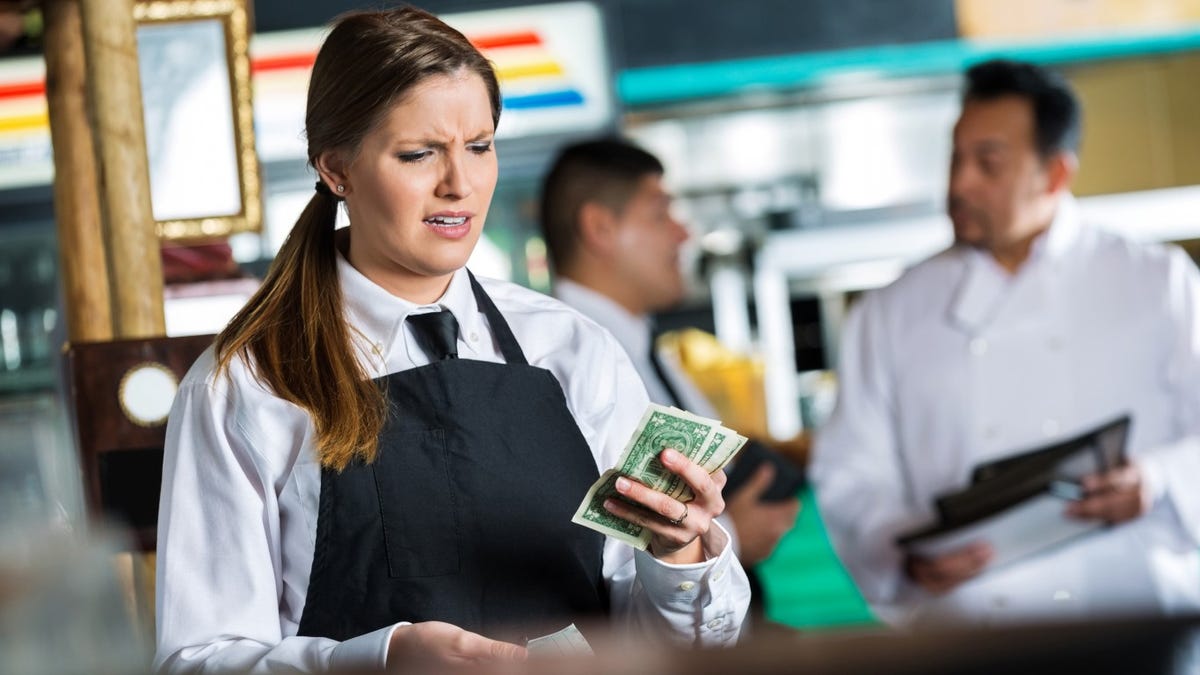Bussiness
Americans are tipping less often but requests continue to pile up, survey says

5 things to consider before tipping at restaurants
The debate surrounding tipping at restaurants continues to rage on, with different cultures having different takes on tipping etiquette.
unbranded – Lifestyle
Signs of backlash against frequent tipping requests are emerging, but not enough to make them go away, according to a survey by personal finance comparison site Bankrate.
Tipping frequency in every category including for restaurant waitstaff, rideshare and taxi drivers, hairdressers and food deliverers has generally declined over the past few years, Bankrate said. Leading the rebellion are Gen Zers, millennials and men, even though older generations are more likely to be grousing about constant tipping requests.
“Older Americans seem to have the most sticker shock about the rising cost of tipping, yet they’re still much more frequent tippers than Gen Zers and millennials” and tend to be generous, said Ted Rossman, Bankrate senior industry analyst.
Who are the most reliable tippers in a restaurant?
Older patrons and women.
Two-thirds of adults said they always tip when they eat at a sit-down restaurant, but only 35% of Gen Zers (ages 18-27) do, Bankrate’s survey of 2,445 adults between April 29 and May 1 showed.
Fifty-six percent of millennials (ages 28-43), 78% of Gen Xers (ages 44-59) and 86% of baby boomers (ages 60-78) said they always tipped servers. Additionally, 71% of women do, compared to 63% of men.
Who tips the most?
A 20% tip isn’t as easy to get as you may think. Overall, just 37% of U.S. adults say they typically tip at least 20% at sit-down restaurants, Bankrate said.
However, the likelihood of doing so rises with age. Only 17% of Gen Z and 28% of millennials say they tip at least 20% at sit-down restaurants, compared to 41% of Gen Xers and 52% of baby boomers.
Older Americans tend to tip more generously because they usually have higher incomes, Rossman said.
Good service gives you a better chance at a hefty tip
Tip amount is most influenced by the quality of service for 64% of adults surveyed. Only 10% said they would tip the same, regardless of service.
Right or wrong? Restaurant etiquette debate: Should you add a tip when you order takeout food?
Americans, especially older ones, are annoyed
Even if they tip, many Americans feel annoyed about constantly being asked, the survey showed. Nearly 3 in 5 U.S. adults have at least one negative view of tipping, with 35% saying they believe “tipping culture has gotten out of control.”
Thirty-four percent of respondents said they find pre-entered tip screens at places like coffee shops and food trucks annoying, and a quarter will tip less or not at all when they encounter one. Baby boomers (48%) and Gen Xers (40%) are the most irritated by those tip screens compared with only 23% of millennials and 17% of Gen Zers.
Why are we always being asked for tips?
During the pandemic, many businesses added automatic gratuities amid high inflation and just never got rid of them, experts said.
“Many companies are hesitant to raise prices further, given all of the increases we’ve seen in recent years,” Rossman added. “Asking for tips can essentially be a way for them to raise prices without acting like they’re raising prices. Tipping is a surcharge of sorts that pushes more of the burden on customers, enabling workers to make more money without their employer needing to foot the bill.”
Will constant tip requests ever stop?
Probably not.
“Tipping is a hot-button issue that doesn’t seem to be going away anytime soon,” Rossman said.
“As much as Americans grumble about tipping, there’s substantial evidence that they’re tipping anyway,” he said. “Starbucks says about half of its customers tip when encountering one of these prompts. I’m sure nowhere near that many were putting bills or coins in an old-fashioned tip jar.”
Even if the minimum wage rises like it did recently in California to $20 per hour for fast-food workers, Rossman doesn’t expect aggressive tip requests to go away. Instead, the higher wages will likely lead to businesses raising their prices and cutting workers as in California, he said.
“If anything, a higher cost of living is combining with technology to make it both easier and more lucrative to solicit tips,” he said.
Medora Lee is a money, markets, and personal finance reporter at USA TODAY. You can reach her at mjlee@usatoday.com and subscribe to our free Daily Money newsletter for personal finance tips and business news every Monday through Friday morning.







:max_bytes(150000):strip_icc()/roundup-writereditor-loved-deals-tout-f5de51f85de145b2b1eb99cdb7b6cb84.jpg)


